What is iron ore?
Iron ore is a mineral substance that generates metallic iron (Fe) when heated with a reductant. Iron ore generally comprises iron oxides, the primary forms of which are magnetite (Fe3O4) and hematite (Fe2O3). Hematite is widely considered one of the most important iron ores due to its high-grade concentrate of iron and its abundance. Iron ore containing over 60% hematite or magnetite is regarded as high-quality iron ore, otherwise known as direct shipping ore.
Magnetite, also referred to as lodestone, is a black isometric mineral best known for its magnetic properties. Some forms of magnetite from specific localities are magnets, the only example of any natural mineral being a magnet.
Types of Iron Ore
Overall, there are four main types of iron ore deposits:
- Massive hematite
- Magnetite
- Titanomagnetite
- Pisolitic ironstone
The five main types of iron ore forming minerals are:
- Hematite (70% Fe)
- Magnetite (72% Fe)
- Goethite (63% Fe)
- Limonite (up to 60% Fe)
- Siderite (48.2% Fe)
An ore’s quality is also impacted by the commercially worthless material surrounding it, collectively known as gangue. Silica and phosphorus-yielding compounds are especially important because they affect the structure of the metal and can sometimes complicate the steel-making process.
Despite being the fourth most abundant element in the Earth’s crust, iron is one of the most important elements ever discovered.
What does iron ore look like?
Iron ores have variable appearances. Hematite, for instance, can range from coarse to metallic. Its colour also fluctuates from red and brown tones to black, dark grey, or silver tones. However, when scraped across a scrape plate, all hematite specimens will produce a reddish streak.
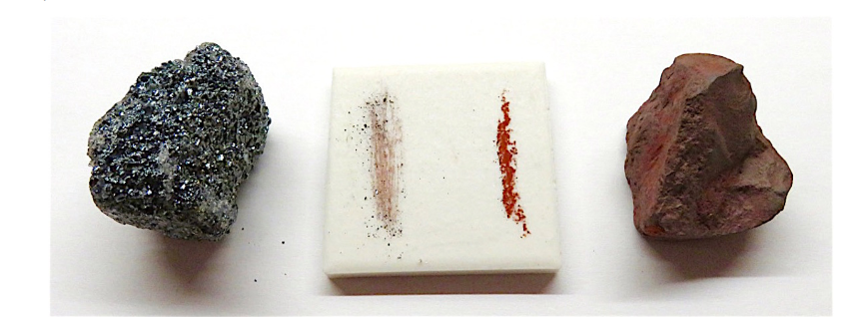
Magnetite, however, is commonly black, brown, or dark grey in appearance, sometimes with a deep purple hue, opaque and metallic lustre.
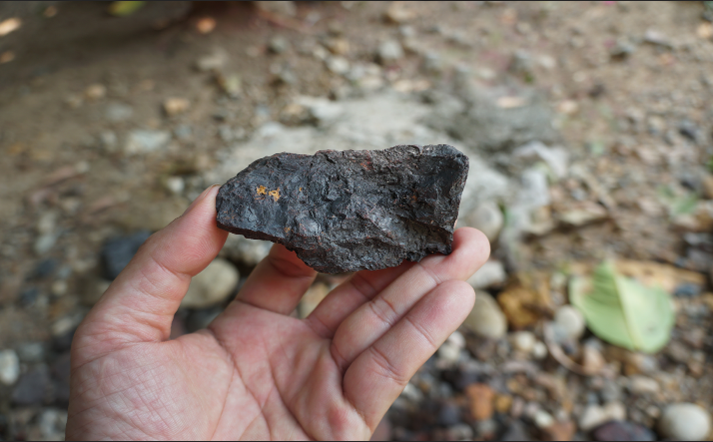
Goethite can also vary in appearance, ranging from brownish yellow to dark brown, and limonite often appears as a bright yellow to dark brown. Finally, siderite often presents with greyish white tones.

What is iron ore used for?
Iron ore, most commonly pig iron, is used to supply the world’s iron and steel industries, including transportation, construction, household appliances such as washing machines as well as energy and rail infrastructure. It is the key ingredient in producing steel, which a vast majority of the world’s industrial foundations rely on. The United States Geological Survey states that the steel-making industry consumes almost all (98%) of iron ore demand.
A range of sectors utilizes the remaining 2%. For example, the medical industry uses radioactive iron as a tracer element in biochemical and metallurgical research. Powdered iron is used for certain types of magnets, steel catalysts, and auto parts. In contrast, black iron oxide is used as a pigment in polishing compounds, medicine, and metallurgy.
Iron is also widely used with other metals to create alloys, particularly wrought iron. Wrought iron is an alloy with low carbon content. It is soft and malleable yet still very strong, making it perfect for various fencing, horseshoes, and piping applications.
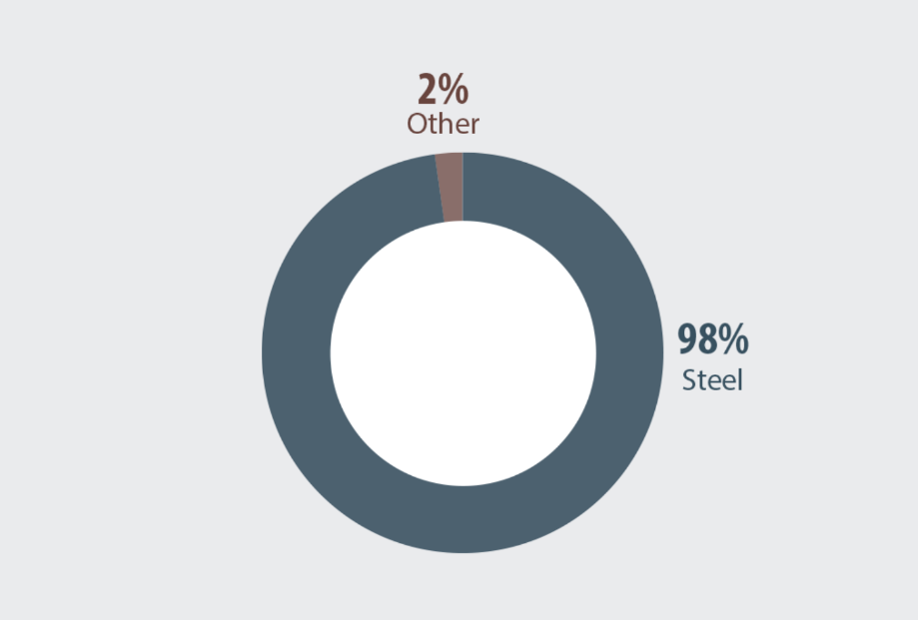
How is iron ore mined?
There are two basic mining methods in iron ore production: surface and underground mining. Iron mining must be done on a significantly large scale at the lowest possible price to be economical. This is why surface mining is the preference for many companies, although there are exceptions. Alternatively, a few mining companies opt for underground mining if the iron ore near the surface isn’t of a high enough grade.
Next is iron ore processing. Once the economically extracted ore has reached the pelletizing plant, it then undergoes crushing, meaning it is literally crushed into much smaller pieces. Machines crush the rocks until they are the size of a marble. The materials are separated, and the waste product is transferred into tailing bins.
Iron ore fines are then sent to a pelletizing plant. They are then agglomerated into pellets by a process known as sintering and then hardened using a furnace to create iron ore pellets. These are then typically supplied to a blast furnace or DRI plant as part of making steel.
Iron ore demand
There was a decrease in iron ore demand following the rise of global inflation in 2022, trickling down to other metals and products containing iron ore. This includes raw steel production, which globally was estimated to have decreased from 85.5Mt in 2021 to 82Mt in 2022. However, this downward trend is expected to level and rise once more as the economy stabilizes in 2023.
This is particularly noticeable in Australia’s statistics around iron ore exports, with the government’s Resource & Energy Quarterly for December 2022 indicating that the country stands as the world’s number one exporter and producer of iron ore deposits. China remains the country with the highest demand for Australia’s iron ore, making up 62% of the country’s export demands. From 2021-22, China’s demand afforded Australia earnings of around AU$108.9B and this number is expected to rise in 2023, much like other major exporting countries around the world, including Brazil, South Africa and Canada.
Iron ore supply
Following the downward trend of global iron ore demand, supply also dropped further in 2022. While the world total of mine production in 2021 sat at a rounded 2,680,00t of usable ore, that number dropped to 2,600,000 in 2022. The lack of demand during 2021-22 affected the overall global supply market, but these levels are also expected to rise as the iron ore market begins to improve in 2023.
Largest iron ore producers
An overwhelming proportion of the world’s iron ore mining happens in Australia. As shown by the graph below, Australia generated an estimated 880Mt in 2023, with Brazil coming second at a significantly lower 410Mt.
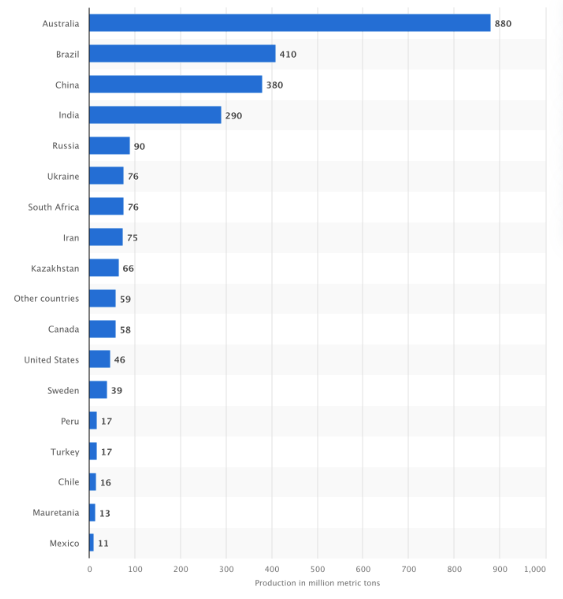
Vale
In terms of leading iron ore producing companies in 2021, Brazilian mining giant Vale (BOVESPA: VALE3) salvaged the top spot again by producing an estimated 319.6M tonnes that year. One of Vale’s most significant iron ore mines is the Carajás Mine located in Para in Northern Brazil, holding 7.27B tonnes of iron ore reserves (proven and probable).
Rio Tinto
The second largest iron ore producer came out as Rio Tinto (ASX: RIO), generating an estimated 276.6M tonnes in 2021. Rio Tinto has an iron ore mining network located in the Pilbara region of Western Australia, comprising 16 substantially sized mines.
BHP (formerly BHP Billiton)
Similar to Rio Tinto iron ore, BHP (ASX: BHP) currently owns five mines in Western Australia’s Pilbara region. The company produced an estimated 245.4M tonnes of Iron ore in 2021. BHP is also responsible for implanting Australia’s largest new iron ore mine in more than 50 years, known as the South Flank mine.
Fortescue Metals
Finally, in fourth place is Australian-based miner Fortescue Metals. The Fortescue Metals Group (ASX: FMG) produced 84.7M tonnes of iron ore in 2021. Fortescue Metals Group’s largest Christmas Creek Mine is also in Western Australia.
Desirable Pilbara blend in the Mid-West
The Pilbara region is Australia’s mining powerhouse and contributes considerably to the country’s national wealth. Its iron ore and liquefied natural gas industries are valued at over AUS$70B, representing more than 70% of mineral and energy production in Western Australia. Many miners are drawn to Pilbara’s rusty red cliff’s natural resources.
Australian producers of iron ore experience a logistical advantage over their Brazilian rivals. This is due to advanced port facilities and only 12 days to complete iron ore exports to China compared with around 45 days from Brazil.
Iron ore price
According to data collected by S&P Market Intelligence, the current spot price of GSCI Iron Ore sits at US$112.37/t as of March 29 2023.
Historical price performance
Iron ore pricing has experienced significant volatility over the last 30 years. The image below demonstrates the peaks and troughs iron ore has superseded since 1993.
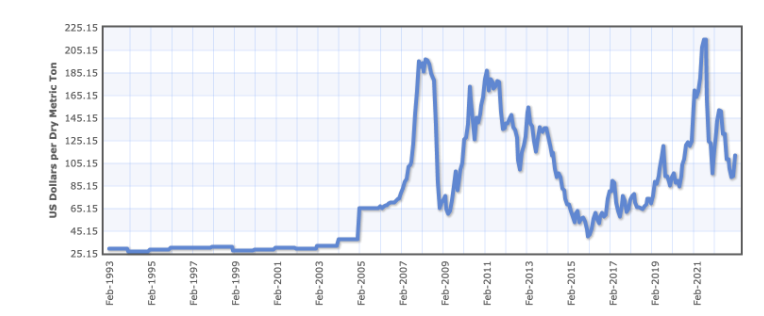
As previously reported in an Assay article, iron ore prices usually traded below US$30/t for many years leading up to the 2000s. The industry was a low-margin business, where miners would generate returns on their initial investments over lengthy periods.
Decades of predictable pricing patterns changed with the onset of the China surge in crude steel production, with iron ore prices climbing sharply towards the US$200/t mark. China’s nascent demand blindsided the iron ore industry dominators, resulting in a deficit that must be addressed.
In a report by Reuters, iron ore prices have had a strong start to 2022. As assessed by commodity price reporting agency Argus, the spot price for delivery to north China hit a high of $153.55/t on 10 February 2022.
This analysis runs in conjunction with data collected by S&P, stating that according to the New York Mercantile Exchange, on 10 February 2022, The Steel Index Iron Ore Fines 62% (predominantly the type of iron imported by China) reached 153.75.

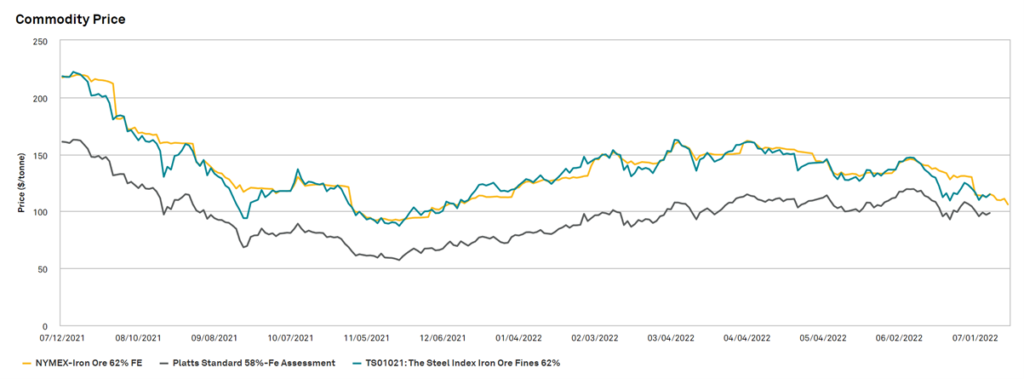
Nevertheless, as reported by Reuters, the spot price of iron ore experienced a tumultuous time in 2022, as wedged between short-term concerns regarding the economic vigor of global iron ore dominator China, predominantly in the face of constricting lockdowns, and a longer-term threat to the current market system as Beijing seeks to lower costs permanently.
This same report found that the benchmark 62% iron ore for delivery to north China dropped to $121.95/t on 17 June 2022. A significant decrease compared to 1 January, down 24% from the highest spot price so far in 2022 of $160.30 on 8 March.
Despite this substantial period of iron ore pricing decreases, 2022 ended on a higher note, with China’s overall iron ore imports in the September quarter reaching 287Mt. This was an increase of 7.3% compared to the previous quarter and of 2% when compared to the same period in 2021. Brazil was the largest producer in this number, providing an additional 14Mt to their usual import numbers.
These increasing numbers are reflected in the global supply balance, with potential improvements estimated to continue into 2023.
Iron ore price forecast
Australia’s Resources and Energy Quarterly December 2022 report has modified higher global iron ore price forecasts for 2022. Although there was a price dip from China lockdowns and the property sector from March onwards, this did not stop their imports from rising to 287Mt. This improvement was seen globally by the September quarter, with the spot price for 62% Fe iron ore fines being an average of US$100/t.
In contrast, the report also says that looking over to the year 2024, iron ore prices are projected to begin declining towards lower longer-run levels. This is due to more modest growth in blast-furnace steelmaking from major producers like the EU, US and China compared to the last decade. This is expected because of the global initiative to implement additional low-emission, greener mining and production methods, resulting in a projected average of US$75/t in 2024.
Iron ore market outlook
With the information and statistics gathered in this piece, it is clear that the iron ore market is projected to undergo several major changes. The Resources and Energy Quarterly December 2022 report has predicted that Australia’s iron ore exports are expected to increase by 2.5% in 2022–23 to 896Mt and by 2.7% to 920Mt in 2023–24. This is expected to be reflected in other major export countries, particularly Brazil.
Even with this increase in exports, the Australian government still expects overall earnings to decrease as iron ore prices continue to drop. This is due to the country’s reliance on China as a major importing country, with 82% of Australia’s 2022’s export earnings coming from them. The country’s difficulties in recovering from lockdowns and decreases in domestic industrial production like steel making or other metal commodities. Earnings are predicted to reach a low of AU$95B in 2023-24 from AU$113B in 2022-23, with the potential to drop further remaining highly possible.
Countries are expected to fail to produce steel and pure iron commodity levels seen in past years, mostly due to the restrictions placed by new environmental laws. With the push for iron produced in environmentally-conscious methods continuing into the near future, this number is predicted to continue until alternative low-emission methods for operating mines and iron ore production are created.
To stay updated with the latest information, check out our iron ore news centre to see unfolding developments in the mining space.


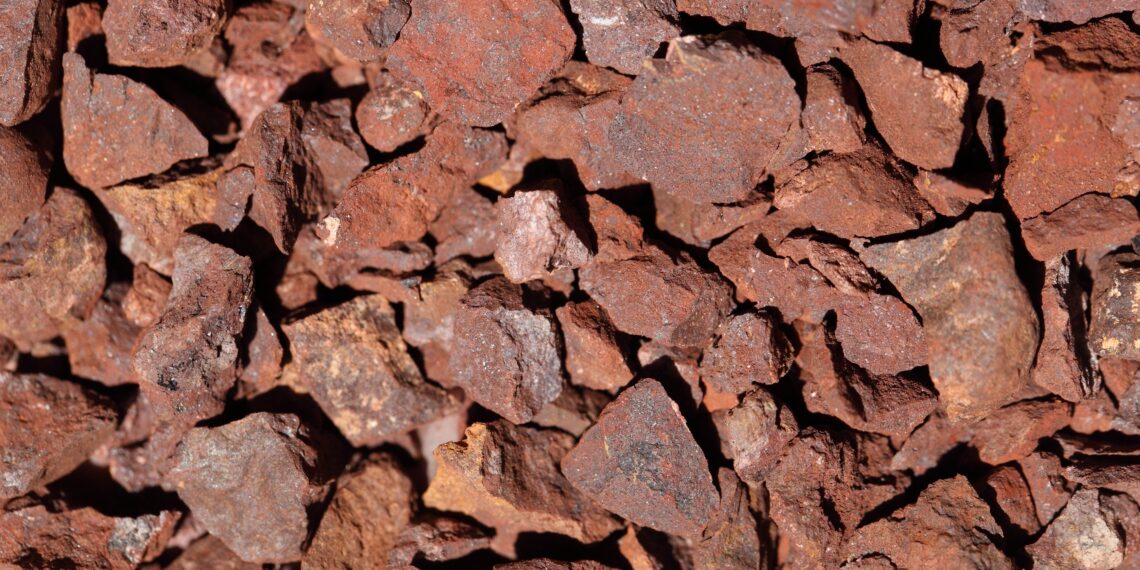



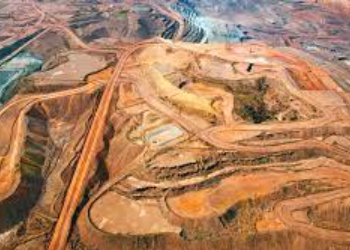
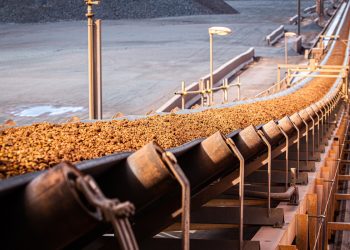


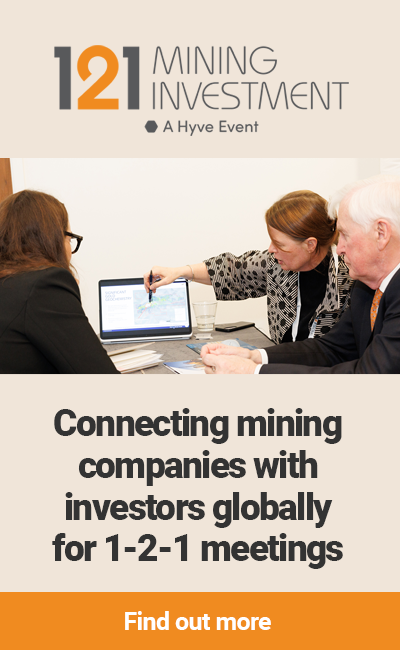


Comments 1